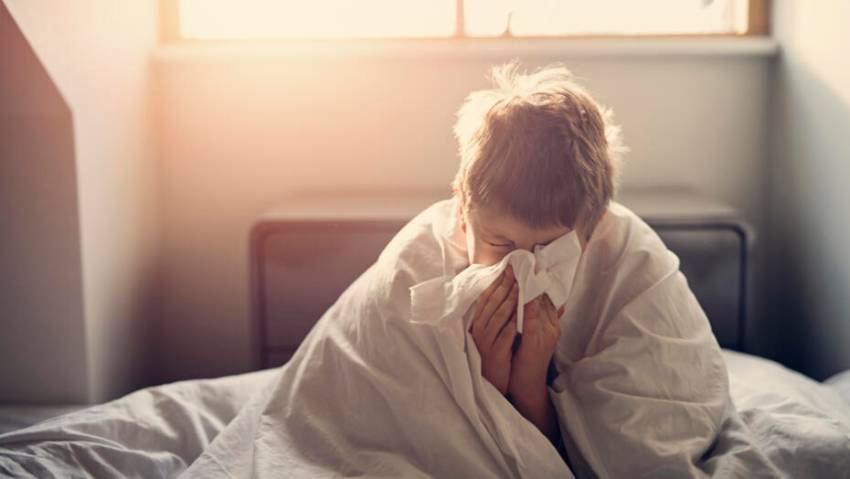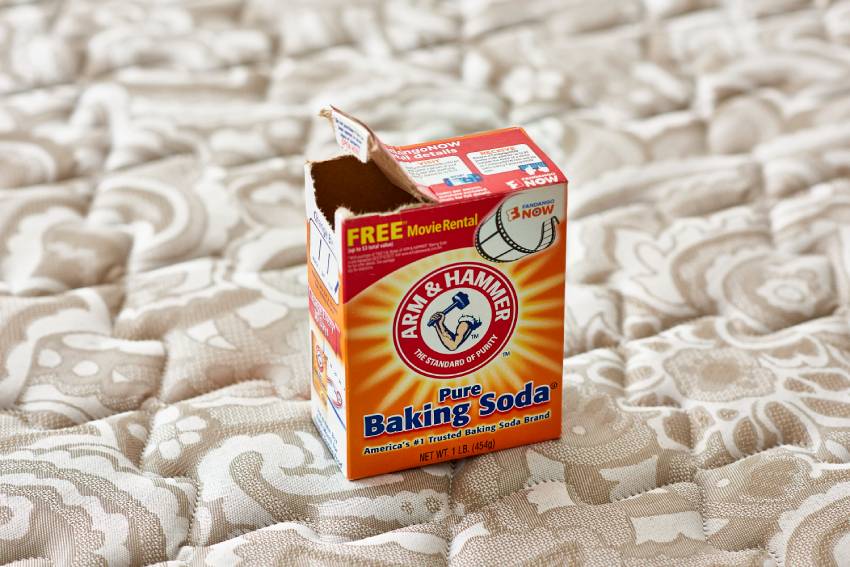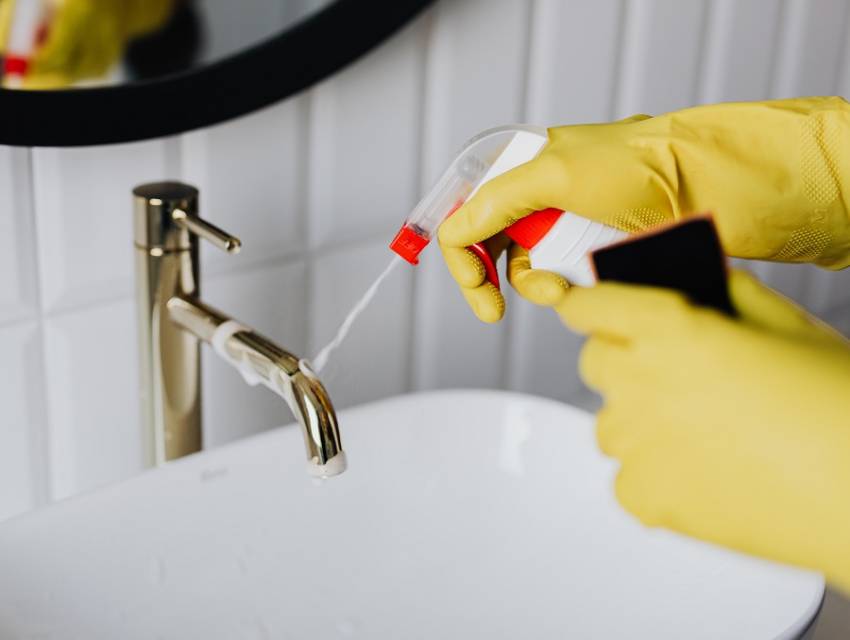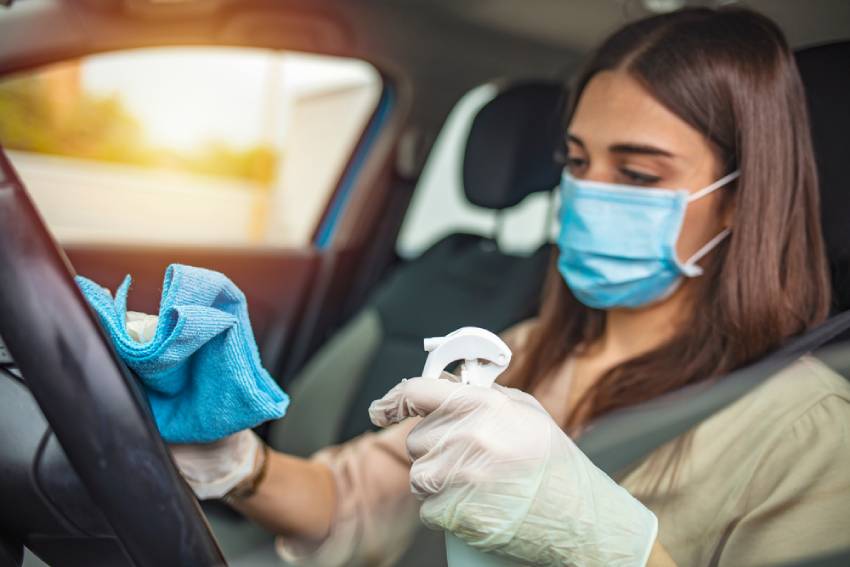If you’ve just recovered from an illness, the last thing you might want to do is start cleaning. But knowing how to clean a room after being sick is an important step in stopping anybody else from contracting their illness. Diseases like the cold, flu, and COVID-19 can all hang around for days after the original patient has recovered. To protect your family and guests from getting the same illness, it’s important to clean thoroughly.
How To Clean Your Home After Being Sick

How to avoid spreading an illness when sharing a home
If you share your home with other people, the best thing you can do if you’re sick is isolate yourself from others. This prevents the disease from spreading. Coughs, sneezes, and stomach upsets can all transmit viruses and bacteria. High-touch areas like door handles, TV remotes, and light switches can also act as fomites and help sickness spread.
To prevent this from happening while you’re sick, follow these Pro tips.
- Isolate as much as possible from other people
- Use disinfectant wipes to clean high-touch points after use
- Keep doors closed to prevent air from circulating inside
- Open windows to allow fresh air into sickrooms
- Use a separate bedroom and bathroom from others if possible
- Wear a mask (for respiratory infections) and wash hands often
- Don’t share personal items like cups, towels, and toothpaste
- Use disposable plates and cutlery
Once you’ve recovered from an illness, you can stop using the above precautions. However, it’s still a good idea to clean thoroughly before everybody in the house can relax.
How to do a Covid deep clean
If somebody in your household contracted COVID-19, you might be wondering how to do a deep clean after a Covid case. The virus that causes Covid is called SARS-CoV-2, and it’s no tougher than any other virus. In fact, the COVID-19 virus has an outer fatty membrane, so anything designed to dissolve fats will kill it. That makes ordinary soap a powerful weapon against the virus!
When cleaning after Covid, you should wear a mask and gloves, and clean all the surfaces that the patient touched. It’s also important to thoroughly clean the rooms the patient was in while they were sick. Just follow our handy guide on how to clean after an illness.
The most common places that need to be cleaned are bathrooms, bedrooms, and vehicles. However, these tips also apply to any other areas of the house that need a good cleaning post-sickness!
Pro Tip: Check out our complete guide to killing the coronavirus on surfaces.

Cleaning a bedroom after sickness
You probably spent most of your time in your bed, so that’s the place to start cleaning. First, open the curtains and windows if possible. Get as much light and fresh air into the room as you can. The UV light in sunlight has germicidal properties so it really can make your room healthier.
Next, strip the bed. Wash your bedding on a hot water cycle to kill any germs that might be lurking in the fabric. If you use a mattress protector, clean that as well. And also consider cleaning your mattress. A steam cleaner is a great tool that’s suitable for most mattresses (except memory foam).
While washing your bedding, don’t forget any clothes that the sick person wore. They can also go on a hot wash to disinfect them. If you use a canvas laundry bag, wash that too. For plastic or wooden laundry hampers, give them a spray with disinfectant.
Pro Tip: When using a disinfectant, always follow the guidance on the label. Most need to be applied generously and allowed to air dry to be effective against germs and bacteria.
Wipe down any surfaces and objects the sick person touched. That includes bedside tables, alarm clocks, and electronic devices.
Finally, vacuum carpets or mop wooden flooring. Use an appropriate disinfectant spray or soapy water to kill any remaining virus.
Once you’re done cleaning, wash your hands thoroughly with hot, soapy water. According to the CDC, soap is a more effective cleaner than hand sanitizer against COVID-19.

How to disinfect a mattress from Covid
If someone in your house has recently recovered from COVID-19, you need to take extra precautions to prevent others from getting sick. Fortunately, it’s pretty easy to do a deep clean after a Covid case.
- If you weren’t the person who was sick, wear gloves and a mask while cleaning
- Strip the bed and use a vacuum brush attachment to vacuum the mattress
- Steam clean your mattress if possible
- Alternatively, cover the mattress with a thin layer of baking soda and leave for 4-24 hours before vacuuming up
- Use a fabric disinfectant spray on the mattress and allow it to air dry
- Alternatively, use a little fabric soap and enough water to dampen the mattress and allow it to air dry
How long does Covid last on a mattress?
A study by the U.S. National Institute of Allergy and Infectious Diseases looked at how long SARS-CoV-2 can live on different surfaces. The virus lives the longest on smooth, solid surfaces like plastic and metal. On soft, porous surfaces like cardboard and fabric, the virus only lives a day or two at most.
How long do viruses survive on different surfaces?
SURFACE |
SARS-CoV-2 (COVID-19) |
FLU VIRUS |
NOROVIRUS (STOMACH FLU) |
Fabric |
1-2 days |
8-12 hours |
3-4 days |
Paper/cardboard |
2-3 days |
Up to 1 day |
3-4 days |
Plastic |
3-4 days |
2-3 days |
2-3 weeks |
Stainless steel |
3-4 days |
2-3 days |
2-3 weeks |
Air |
4-6 hours |
3-4 hours |
Unknown |

Cleaning a bathroom after sickness
Bathrooms have more non-porous surfaces than bedrooms, so there are more places for the virus to survive. However, bathrooms are usually easy to clean because you can clean most areas with water.
Use hot, soapy water or an appropriate disinfectant spray tested on viruses and bacteria, and thoroughly clean the following areas:
- Bath and/or shower
- Sink and faucets
- Toilet, including handle
- Countertops
- Walls and floor
- Door and door handle
You also need to clean all the bathroom objects the sick person might have touched. Wash the towels and bath mat, and wipe down any bottles, toothpaste tubes, brushes, and anything else with a disinfectant wipe or soapy water.
Pro Tip: Check out our Pros’ review of Clorox vs. Lysol for Covid-19.
How to disinfect a toothbrush after illness
If you use an electric toothbrush with a replaceable head, change it out after you recover from your illness. And don’t hang on to cheap manual toothbrushes either. It’s safer to get rid of them, and they need changing every 3-4 months anyway.
If you do need to disinfect your toothbrush to make it safe for reuse, follow these tips:
- Soak the toothbrush for 5 minutes in antibacterial or alcohol-based mouthwash, then rinse with plain water
- Soak the toothbrush in 3% hydrogen peroxide for 10 minutes, then rinse with plain water
- Use denture cleaner, such as Polident, to sanitize your toothbrush
You should clean all the toothbrushes in the bathroom that the sick person used, not just their toothbrush.
How to clean Invisalign after being sick
If you use a removable dental or oral device such as aligners, retainers, or a mouth guard, you also need to clean them after you’ve been sick. Most of these devices can be safely washed with soap and water. Alternatively, soak them for 5-10 minutes in antibacterial mouthwash or 3% hydrogen peroxide solution.
If you aren’t sure what cleaning solution is right for your device, contact your dentist or physician’s office for advice.

Cleaning a vehicle after sickness
You might not think about cleaning your vehicle, but if you were in it at any time while you were sick, it also needs to be cleaned and disinfected. Viruses can survive very well on the plastic, glass, and metal surfaces inside vehicles, which is why it’s important to clean your car after Covid-19.
You can use soapy water or a disinfectant wipe to clean inside your car. Focus on high-touch areas such as:
- Steering wheel
- Turn and wiper levers
- Door handles and side pockets
- Radio and climate controls
- Rearview mirror
- Gear shift
- Seatbelt strap and buckle
- Grab handles
You also need to clean the seat and armrests used by the sick person. To do this, first vacuum up any loose dirt. Then use upholstery shampoo or soapy water to wash down the seat. Use liquid sparingly. You only want to get the seat damp, not wet. Let the seats air dry, ideally by parking the vehicle in direct sunlight. Try to air the vehicle by leaving the windows open if it’s safe to do so.
Final thoughts
After recovering from an illness, the last thing you might feel like doing is cleaning. But it’s an important step to ensure you remove any viruses or bacteria that might still be hanging around. This can help protect your family and guests from also getting sick. It will also make your home feel like a fresher, brighter place to be, and that can help you feel better too!